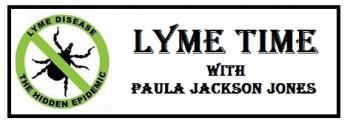What have I been exposed to: Test that tick!
With Lyme, Anaplasmosis and Babesia on the rise here in Maine and three past reported cases of Powassan in the Midcoast region, how are we to know and understand what tick-borne diseases we have (potentially) been exposed to if we don’t become symptomatic right away (if at all) and the classic “bulls eye rash” doesn’t appear? We’re probably safe, right? Wrong!
A 2015 field surveillance done by researchers from Maine Medical Research Institute, found that over 50 percent of Maine’s tick population carried Lyme Disease. Both Anaplasmosis and Lyme are transmitted by the eight-legged deer tick, which also carries Babesiosis and Powassan virus. There are currently 14 different species of ticks here in Maine, each known to carry disease(s). So, if one tick can harbor and transmit several of the infections at once, and I’m bitten, how do I know what I’ve been exposed to?
Tick testing
In recent years, it has become more and more common for ticks to be sent into laboratories to test what diseases the tick(s) could be carrying. Because ticks can carry many different disease and present with different symptoms, with the knowledge of what you’ve been exposed to, it reduces your chances of misdiagnosis and delayed proper treatment.
Not all ticks are going to give you classic bulls-eye rash which can and will throw off your perception of tick-borne disease exposure. With all the media reporting on ticks and diseases, I am still being asked (and shown) “is this rash Lyme disease?” We have a photograph on our website www.mldse.org that shows 40 different people who have tested positive with 40 different looking rashes. Tick-borne disease is not black and white. It’s very gray and confusing to many medical patients and providers. At times, its hard to diagnose which make it that much harder to treat.
On Friday June 22, I traveled up to Orono to visit the new tick lab at the University of Maine Co-Op Extension. What an amazing facility that will be once it is up and running. They currently only identify the species and gender of the tick. With the addition of the new lab that is slated to open later this year, testing for what disease(s) the tick may be carrying will be possible. At this time, sending the tick out of state to TickReport.com, located in Amherst MA, they will test the tick for $50 and you get your results in approx. 3 days with a 99.98% accuracy level. That is better than the current blood tests.
Knowledge is power
Knowing what you’ve been exposed to will greatly increase your chances for appropriate treatment in a timely manner. It will help guide your doctor in the right direction if/when you become symptomatic. Tick-borne diseases present differently and because they present so differently, can be misleading to a provider. Each disease requires its own test. Treating an infection quickly also reduces chronic illness and debilitating symptoms from long-term exposure to lingering infection.
Ideally, prevention is key to staying tick-free ~ wearing repellent on your skin and treating your clothing with permethrin, treating your pets, homes and yards. However, if you are exposed to a tick bite, know what you’re dealing with. Get that tick tested!
Paula is the president of the MLDSE, the co-chair of the Access to Care Services and Patient Support subcommittee of the Federal HHS Tick-borne Disease Working Group, the Maine-partner of the national Lyme Disease Association, member of Maine’s CDC Vector-borne Workgroup and active in Maine’s Lyme legislation. You can reach her at paula@mldse.org and visit her website www.mldse.org






























